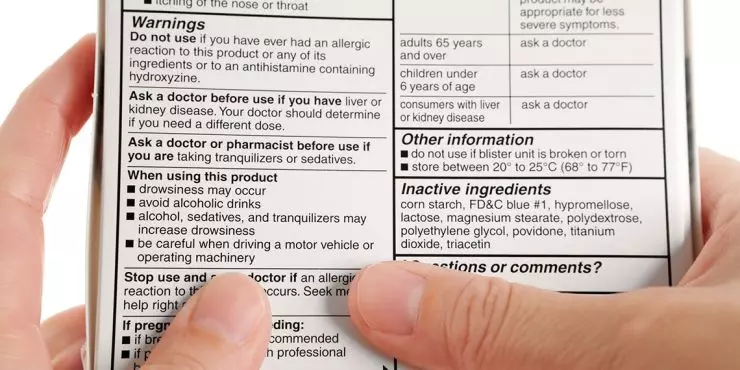
Medications can be a vital piece of the puzzle of keeping ourselves and our families healthy, but let’s face it—reading medication labels can sometimes feel like decoding a secret language. With all the fine print, unfamiliar terms, and lists of ingredients, it’s easy to feel unsure about what’s safe and how to use medications effectively. The good news? Learning how to read and understand medication labels isn’t as complicated as it seems, and it’s one of the best ways to make informed, confident choices for your health.
Let’s break it all down so you can feel prepared and empowered the next time you reach for that bottle or box.
Why Understanding Medication Labels Matters
Medication labels are designed to provide essential information about how to use the drug safely and effectively. Misinterpreting a label can lead to:
- Overdose or underdose: Taking too much or too little of a medication may reduce its effectiveness or cause harm.
- Side effects or adverse reactions: Misusing medication may increase the risk of unwanted side effects.
- Unintended interactions: Certain medications, foods, or supplements can interact negatively with one another.
By understanding the label, you can avoid these risks and ensure the medication is being used correctly. Still unsure? Be sure to talk with your doctor.
Key Sections of a Medication Label
Here are the most important parts of a medication label and what they mean:
1. Active Ingredients
- What it is: The active ingredient is the chemical component responsible for the medication’s therapeutic effect.
- Why it’s important: Knowing the active ingredient can help you avoid taking multiple medications with the same ingredient, which could lead to an accidental overdose. For example, many cold medicines contain acetaminophen, which is also found in Tylenol.
2. Purpose
- What it is: This section describes the medication’s intended use, such as pain relief, fever reduction, or allergy relief.
- Why it’s important: Make sure the medication matches your specific symptoms or needs.
3. Uses
- What it is: A list of symptoms or conditions the medication is designed to treat.
- Why it’s important: Ensure that the medication is appropriate for your symptoms to avoid unnecessary side effects or ineffective treatment.
4. Directions
- What it is: Instructions for how and when to take the medication, including dosage, frequency, and age guidelines.
- Why it’s important: Follow these instructions carefully to avoid overdosing or underdosing. For children, use the weight-based dosing if provided, as it’s often more accurate than dosing by age.
5. Warnings
- What it is: A section that highlights potential risks, such as side effects, interactions, and when to stop use.
- Why it’s important: Pay attention to warnings about allergies, pregnancy, or pre-existing conditions, as these can impact safety.
6. Inactive Ingredients
- What it is: Substances that do not have therapeutic effects but are included for flavoring, preservation, or consistency (e.g., dyes, fillers, or sweeteners).
- Why it’s important: If you or your child have allergies or sensitivities, review this section carefully to ensure the product is safe.
7. Expiration Date
- What it is: The date after which the medication may not be effective or safe to use.
- Why it’s important: Avoid using expired medications, as their potency may decrease or harmful byproducts may form over time.
8. Storage Instructions
- What it is: Recommendations for how to store the medication, such as keeping it at room temperature or refrigerating it.
- Why it’s important: Proper storage ensures the medication remains effective.

Common Misconceptions About Medication Labels
- “More is better”: Doubling the dose won’t make the medication work faster or better and could cause harm. Always stick to the recommended dose.
- “If it’s OTC, it’s 100% safe”: Over-the-counter medications can still have risks, especially if combined with other drugs or taken incorrectly.
- “It’s okay to share medication”: Medications are prescribed or recommended based on individual needs. Never share medication with someone else.
Tips for Making Informed Choices
Ask Questions
If you’re unsure about any part of a medication label, don’t hesitate to ask your pharmacist or doctor. They can clarify instructions, recommend alternatives, or address your concerns.
Keep a Medication List
Maintain a list of all medications, supplements, and vitamins you’re taking. This helps healthcare providers spot potential interactions.
Use the Right Measuring Tools
For liquid medications, use the dosing tool provided with the product. Kitchen spoons are not accurate and can lead to dosing errors.
Check for Interactions
Read the warnings section carefully, and consult with your doctor if you’re taking other medications to avoid harmful interactions.
Review Before Administering to Children
Always double-check the dosing instructions for children, and never guess based on adult doses.
When to Seek Professional Advice
Call your doctor or pharmacist or go to the emergency room if you experience:
- Unexpected side effects: Rash, difficulty breathing, or severe dizziness.
- Uncertainty about dosage: Especially for young children, pregnant women, or those with chronic conditions.
- Questions about interactions: If you’re taking multiple medications, supplements, or have dietary restrictions.
Empower Yourself Through Knowledge
Understanding medication labels empowers you to make informed choices for yourself and your family. By taking the time to read and interpret labels carefully, you’re not only protecting your health but also using medications as effectively as possible.
If you have any questions about medication use, your healthcare provider at Northwest Family Clinics is here to help. We’re committed to your health and wellness every step of the way.
By learning how to decode medication labels, you’re taking an important step toward becoming an active participant in your healthcare journey. Stay informed, stay safe, and always reach out with questions—because your health matters!
Other Articles You Might Like:
Your Guide to Over-The-Counter Pain Relievers
Bumps, Scrapes, Bruises - When to Head to Urgent Care
When to Head to Your Regular Doctor, Urgent Care or the Emergency Room